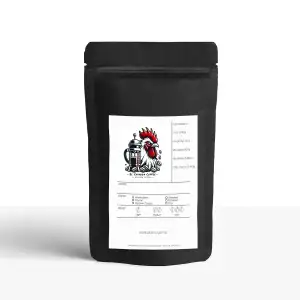OSHA Compliance Made Easy: Understanding Bloodborne Pathogens Certification for Tattoo Artists
For tattoo artists, ensuring the health and safety of their clients is paramount, making Bloodborne Pathogens Certification an essential component of their professional training. Understanding the risks associated with bloodborne pathogens is critical in preventing infections and maintaining a sterile environment in the studio. The Occupational Safety and Health Administration (OSHA) 29 CFR 1910.1030 outlines crucial guidelines for bloodborne pathogens certification, empowering artists with the knowledge to identify, manage, and mitigate potential exposure incidents. With comprehensive bloodborne pathogens training, tattoo artists can enhance their skills and confidence, fostering a safe and hygienic atmosphere that reassures clients. This guide will delve into the significance of training on bloodborne pathogens, explore the convenience of bloodborne pathogens training online, and detail the steps necessary to achieve bloodborne pathogens certification for tattoo artists.
Importance of Bloodborne Pathogens Training
Protecting Tattoo Artists and Clients
Bloodborne pathogens training is crucial for safeguarding both tattoo artists and their clients from potential health risks. This training educates artists on the prevalence of pathogens like HIV, hepatitis B, and hepatitis C, which can spread through contact with contaminated blood. By understanding these risks, artists can implement effective strategies to minimize exposure. Protective measures include wearing gloves, sterilizing equipment, and properly disposing of needles. Additionally, artists learn to recognize infection symptoms early, ensuring prompt action if exposure occurs. This proactive approach not only protects individual health but also fosters trust in the studio environment. Clients are more likely to feel at ease knowing that their artist is well-versed in maintaining high safety standards. Thus, the importance lies not just in compliance with regulations but in creating a culture of safety and professionalism that benefits everyone involved.
Compliance with OSHA Standards
Compliance with OSHA standards, specifically the 29 CFR 1910.1030 regulation, is vital for tattoo artists to ensure a safe working environment and avoid legal repercussions. This regulation sets forth guidelines designed to protect workers from health hazards related to bloodborne pathogens. By adhering to these standards, tattoo artists demonstrate their commitment to safety and professionalism. This includes implementing an exposure control plan, using appropriate personal protective equipment, and maintaining proper hygiene practices. Regular training on bloodborne pathogens keeps artists updated on the latest safety protocols and reinforces the importance of these practices. Compliance not only protects the health of artists and clients but also enhances the reputation of the tattoo studio as a safe and responsible establishment. Ultimately, meeting OSHA standards is a critical aspect of professional tattooing, underscoring the need for comprehensive training and adherence to safety guidelines.
Key Components of Certification
Understanding Bloodborne Pathogens
Understanding bloodborne pathogens is a fundamental aspect of certification for tattoo artists. Bloodborne pathogens are microorganisms in human blood that can cause diseases, such as hepatitis B, hepatitis C, and HIV. Tattoo artists, due to the nature of their work, are at an increased risk of exposure, making it crucial to recognize the potential sources and modes of transmission. The certification process involves educating artists on how these pathogens spread, including through needle stick injuries and contact with contaminated surfaces. By gaining a thorough understanding of these elements, artists can employ better safety measures to protect themselves and their clients. This knowledge extends to implementing effective infection control practices, such as sterilizing equipment and maintaining a clean work environment. Ultimately, understanding bloodborne pathogens empowers tattoo artists to prevent exposure incidents, ensuring a safe and healthy studio atmosphere for everyone involved.
Identifying Symptoms and Risks
Identifying symptoms and understanding the risks associated with bloodborne pathogens are critical components of certification for tattoo artists. Early recognition of symptoms such as fever, fatigue, and jaundice can be indicative of infections like hepatitis, allowing for prompt medical evaluation and intervention. Artists must also be aware of the risks inherent in their work environment, such as accidental needle sticks or cross-contamination from reused equipment. This awareness is crucial in implementing effective prevention strategies. Training helps artists learn to assess the likelihood of exposure incidents and reinforces the importance of using personal protective equipment, maintaining hygiene standards, and adhering to safe disposal practices. By mastering the identification of symptoms and understanding potential risks, tattoo artists are better equipped to take swift action if exposure occurs. This not only helps in protecting their health but also maintains the trust and safety of their clients, reinforcing a professional and secure studio environment.
Prevention and Safety Measures
Hygiene and Protective Equipment
Maintaining proper hygiene and using protective equipment are essential safety measures for tattoo artists to prevent bloodborne pathogen exposure. A clean studio environment begins with regular sanitation of surfaces and tools. Artists should ensure that all equipment, including needles and ink caps, are sterile and disposed of after a single use to avoid cross-contamination. Hand hygiene is equally important, with frequent washing and the use of hand sanitizers being crucial steps before and after each session. Additionally, wearing protective gear such as gloves, masks, and eye protection helps minimize direct contact with potentially infectious materials. These practices not only protect the tattoo artist but also enhance client confidence in the studio’s safety protocols. By integrating comprehensive hygiene standards and utilizing protective equipment, artists contribute to a secure environment that prioritizes health and safety, ultimately reinforcing the studio’s reputation for professionalism and care.
Responding to Exposure Incidents
In the event of an exposure incident, tattoo artists must act swiftly and efficiently to minimize health risks. Immediate response steps include thoroughly washing the affected area with soap and water to reduce pathogen transmission. It is crucial to report the incident to a supervisor or designated health professional as soon as possible, as this allows for timely medical evaluation and intervention. Documentation of the incident, detailing how and when it occurred, is essential for both medical records and future prevention strategies. Artists should also undergo post-exposure prophylaxis if recommended, depending on the type of exposure and the risk assessment. Additionally, follow-up medical testing may be necessary to monitor for potential infections. By having a clear, structured response plan in place, artists can manage exposure incidents effectively, ensuring the continued safety of themselves and their clients. This preparedness underscores a commitment to maintaining a professional and safe tattooing environment.
Ready to get started? Visit ACE Bloodborne Pathogen Training or ACE Training Platforms today and take the next step in your career!
Igniting Creativity – Inspiration Sources for Tattoo Artists
The Vital Importance of OSHA Bloodborne Pathogens Training for Tattoo Artists
Texas Bloodborne Pathogens Training
Tennessee Bloodborne Pathogens Training
California Bloodborne Pathogens Training
Ohio Bloodborne Pathogens Training
Pennsylvania Bloodborne Pathogens Training
New York Bloodborne Pathogens Training
Illinois Bloodborne Pathogens Training
By choosing ACE Bloodborne Pathogens Training Tattoo Artists Should Choose ACE Bloodborne Pathogens Training, tattoo artists can ensure they meet their annual OSHA training requirements while gaining the knowledge and skills needed to maintain a safe and professional practice.
ACE Training Platforms
ACE Continuing Education Credits
ACE Food Handler
ACE Home Mortgage







